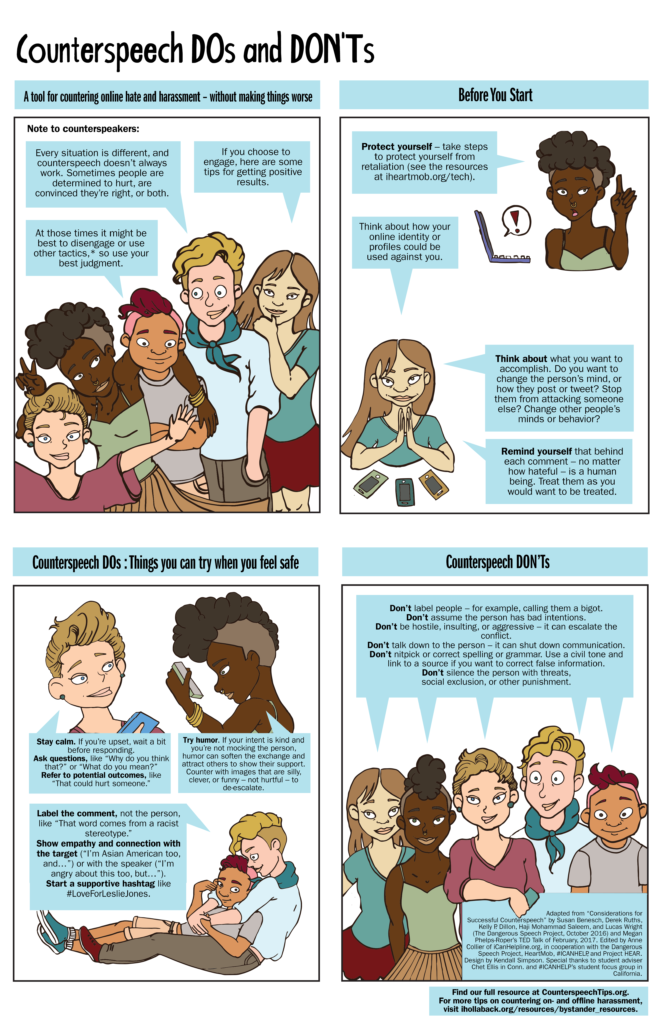Being able to interact with students across the country during our discussion-based HEAR presentations provides so many insights about their experiences related to bullying, relationships, and technology. Digital natives, or those immersed from birth in a culture accustomed to mobile devices and social media, are well acquainted with technology’s benefits. Many also understand that not all that glitters is gold. Technology can be used to threaten, embarrass, and harass. According to an annual study conducted by McAfee, Inc., 87% of young people ages 10 to 18 have witnessed cyberbullying (2014). The latest released CDC data indicate that about 16% of high school students have been bullied online within the last 12 months (2015). We find most students are eager for strategies to stop online harassment, but they admit that speaking up isn’t always easy, especially if they don’t know what say.
So, we collaborated with leaders in digital citizenship to create a practical resource for middle and high school students. The team was led by project visionary and founder of iCanHelpline.org, Anne Collier, and included advocates and activists from HEAR, #ICANHELP, the Dangerous Speech Project and HeartMob. The result is “Counterspeech Tips for Students.” This tool is based on the research of Susan Benesch, Derek Ruths, Kelly P. Dillon, Haji Mohammad Saleem, and Lucas Wright, described in “Considerations of Effective Counterspeech“(2016). Instead of responding to hate with hate, the tool prompts students to respond to hurtful speech with empathy, kindness and even humor as they call attention to hurtful words and consequences.
Illustrator Kendall Simpson transformed our team’s vision into a one-page cartoon that captures students’ attention and empowers them to evolve from digital bystanders to digital upstanders.
Please join us in keeping students safe and supported by sharing this tool widely. Soon, you will be able to download it and read related research on the HEAR website.

